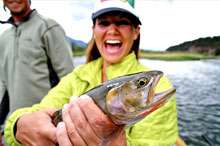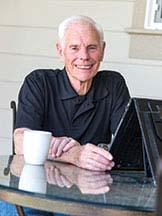No products in the cart.
An Unfished River

When the Road Was Being Built
By Max Jenkins
We had just sat down for dinner in Grangeville one evening in 1950 when Dad casually asked, “Son, would you be interested in riding a pack mule down a mountain to fish the Lochsa River next summer?”
I was twelve years old. Beaming, I answered in a near-shout, “That would be fantastic!”
“To get there,” he continued, “we’ll be driving about seventy miles on the ridgeline of the Bitterroots, which they call the Lolo Trail.”
“Lewis and Clark traveled the Lolo Trail in 1805 and 1806,” I interrupted. “We’ve been studying Lewis and Clark and the Lolo Trail in our Idaho history class.”
The Lochsa River flows in a gorge below the Lolo Trail. Today the Lewis and Clark Highway follows the river to connect west-central Montana with central Idaho. But the highway wasn’t completed until 1962. Construction of the historic road began from both the Montana and the Idaho sides, ultimately meeting in the middle.
My dad, Wes Jenkins, was part-owner of Jordan’s Motors in Grangeville, the seat of Idaho County, which is the state’s largest county, approximately the size of Massachusetts and slightly larger than New Jersey. Dad had sold a pickup to a backwoodsman nicknamed Sugarloaf, who spun a story of an exceptional fishing trip on the Lochsa. For us to take that excursion would require traveling on the Lolo Trail, a dirt road, for seventy or so miles to Sugarloaf’s packing camp, where he kept twenty or so mules and horses. His plan was to prepare supper for us, after which we’d sleep at his camp and then pack down to the river on mules and horses the following morning. We would be on the river in between the two construction areas originating in Montana and Idaho, which amounted to a fisherman’s dream: a crystal-clear unfished river.
This content is available for purchase. Please select from available options.
Purchase Only
Purchase Only

